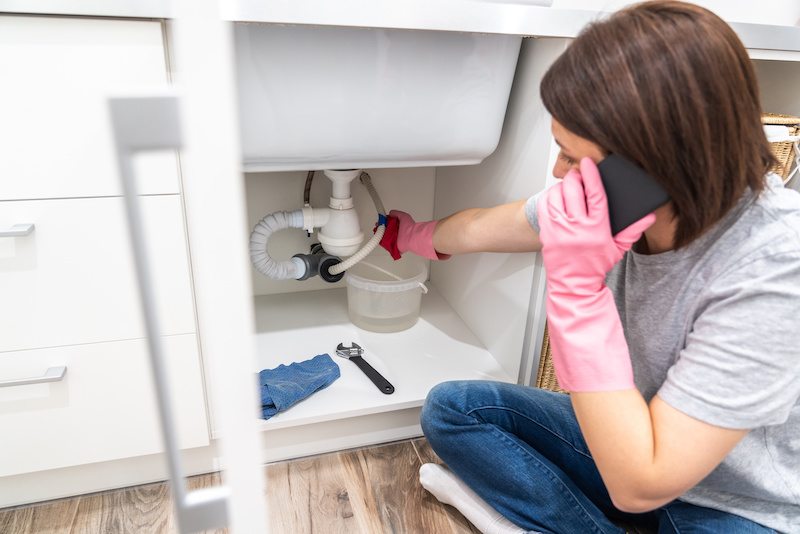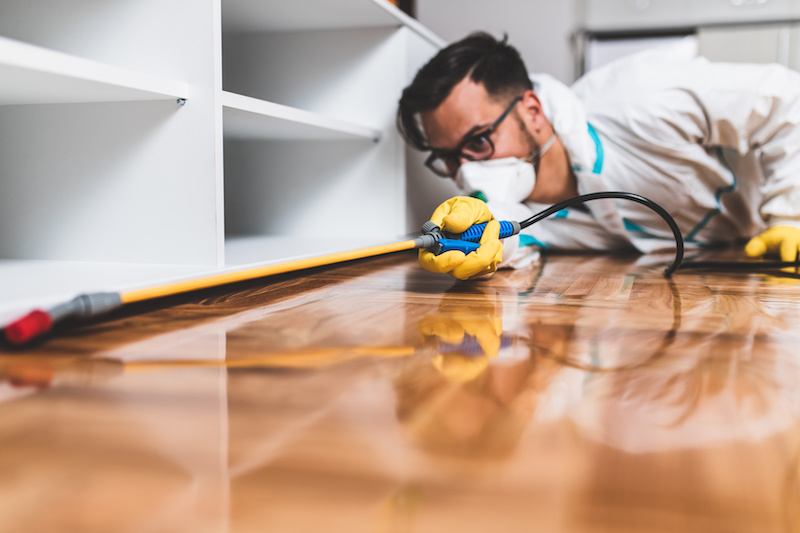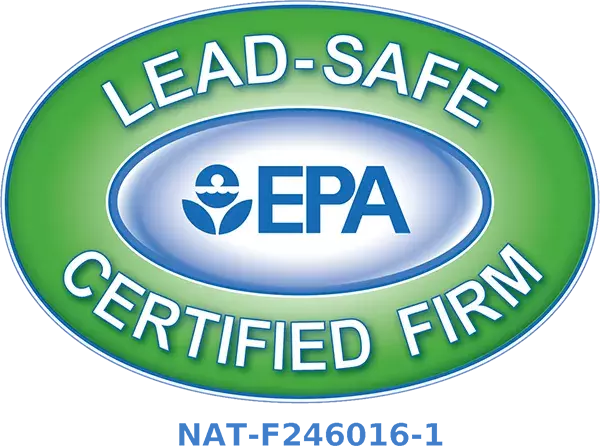Ever found yourself in a damp, dank basement and felt an involuntary shudder crawl up your spine? That’s not just the chill of humidity you’re sensing. It’s also the silent buzz of bugs attracted by water damage lurking in dark corners.
The unsettling truth is that water damage isn’t merely an issue for our homes’ structure or aesthetics. Bugs from water damage can turn into unwanted roommates before we even realize it! They thrive in moist environments, turning every unnoticed plumbing leak or high humidity level into their breeding ground.
This blog post promises to shine light onto these unwelcome guests—common pests like cockroaches and termites—and why they love those hidden, humid areas caused by water leaks. We’ll delve deep into how various home appliances could be unwittingly inviting these creatures and discuss effective pest control measures.
Table Of Contents:
- Understanding the Impact of Water Damage on Pest Infestations
- Common Bugs Attracted to Water-Damaged Areas
- The Role of Water Sources in Attracting Pests
- Identifying Water Damage and Its Effects on Wood
- Preventing and Treating Pest Infestations Caused by Water Damage
- Steps to Take When Dealing with Water Damage and Pest Infestations
- FAQs in Relation to Bugs From Water Damage
- Conclusion
Understanding the Impact of Water Damage on Pest Infestations
Water damage creates an ideal environment for bugs to thrive, leading to unwanted infestations in your home. High humidity levels, standing water, and mildew growth are all attractions for these pests.
The Connection Between Plumbing Leaks and Pest Infestations
Leaking pipes can cause a significant rise in pest numbers due to the excess moisture they create. Bugs from water damage such as drain flies or mold mites are attracted by the increased moisture levels that leaks create. Even unnoticed plumbing problems can lead to a surge in bug populations.
Mildew growth also provides an open invitation for pests like carpenter ants who love damp wood caused by leaking pipes or washing machine water lines. Waterproofing the basement or crawl space can prevent this type of water damage and reduce bug infestations dramatically.

How High Humidity Levels Attract Bugs
Pests don’t just show up uninvited; they’re often lured into homes with high humidity conditions where they lay eggs and multiply rapidly. Standing waters around air conditioning units or garbage disposal units become their constant supply source, attracting even more pests including common ones like termites, cockroaches, etc. Flushing distilled vinegar down drains, however, helps deter insects from entering your home thus helping keep those pesky bugs at bay.
Common Bugs Attracted to Water-Damaged Areas
Water damage isn’t just a headache for homeowners because of the repair costs. It also acts as an open invitation for bugs looking for damp wood, humid areas, and a constant supply of moisture. Some pests find these conditions irresistible.
Cockroach Infestation Due to Water Damage
A prime example is the cockroach infestation that can occur due to water leaks or damage. Cockroaches are among those common bugs attracted to moist environments in homes with standing water, leaking pipes, or high humidity levels.
Cockroaches aren’t alone though – mold mites, drain flies, and even certain types of ants like carpenter ants thrive in similar situations too.
The Wood-Boring Insect Threat: Termites & Carpenter Ants
Moving onto more destructive pests such as termites and carpenter ants who consider damp wood from water-damaged houses their paradise. These tiny insects use this opportunity not only as shelter but also as a food source, which leads them to cause significant structural damage over time.
In addition, many spiders including brown recluse spiders love dark places caused by unnoticed plumbing problems, creating perfect hideouts within your home’s crawl spaces or around leaky sections of washing machine water lines. Much in the same way termites appreciate rotting wood left behind by severe water leaks; they feast on it.
- If you spot signs of any bug activity around your property, especially after recent incidents involving excessive moisture exposure such as flooding then do take action immediately before things get out of hand.
- We suggest reaching out to us at J&R Restoration for expert help in mold remediation, fire damage restoration, and water damage restoration that will keep these unwanted guests away.
The Role of Water Sources in Attracting Pests
When it comes to pests, water sources are like an open invitation. Unnoticed plumbing leaks, for example, can provide a constant supply of moisture that attracts various bugs.
A common source is leaking pipes hidden behind walls or under floors. But did you know even your appliances could be culprits? Washing machine water lines and air conditioning units often accumulate condensation, which creates damp spots ideal for pests.
Another surprising attraction is the garbage disposal unit. These handy kitchen tools may make clean-up easier but they also hold food particles and standing water – two things bugs love.
Flushing distilled vinegar down drains, including those in showers and dishwashers, has been shown to deter insects from entering homes by making their preferred environments less appealing.
Rain Gutters: A Bug’s Paradise?
Outside the home, rain gutters filled with debris can collect stagnant water – perfect breeding grounds for mosquitoes, among other pests. It’s essential homeowners ensure these areas are cleaned regularly to prevent unwanted visitors from settling in.
Plumbing Pipes: The Silent Culprit
Poorly maintained plumbing pipes present another issue; small leaks might go unnoticed while creating high humidity levels attractive to many common household bugs. Regular maintenance checks on your house’s infrastructure will help nip this problem before it escalates into something more serious – such as cockroach infestation or wood-boring insects damaging the structural integrity of your property.
Identifying Water Damage and Its Effects on Wood
Water damage is an open invitation for destructive pests like termites and carpenter ants. These wood-boring insects are drawn to damp or rotting wood, turning your home into their next meal.
Your residence could be vulnerable without you even being aware of it. Common culprits of water damage include leaky sections in water heaters or crawlspaces that have not been adequately waterproofed. Even the smallest amount of moisture can attract these damaging bugs.
The Threat of Termites to Damp Wood
Dampness from water leaks often goes unnoticed until it has already caused significant harm, particularly when it comes to wood structures within homes. This creates perfect conditions for termite infestations as they thrive on moist wood.
A colony starts small but can grow rapidly, causing extensive destruction over time due to constant feeding on wet timber.
On the other hand, carpenter ants also pose a threat similar to termites. Unlike termites though, they don’t eat the wood; instead, they excavate galleries within damp wooden areas which further weakens structural integrity.
Facts You Need To Know:
- Carpenter ants prefer dead or damaged trees while termites feed primarily on cellulose-based materials like cardboard boxes, apart from lumber.
- Maintaining dry spaces around your property significantly reduces risks associated with these common bugs attracted by high humidity levels.
- Properly insulating and ventilating attics along with frequent checks for roof leaks ensures that upper portions remain safe zones against potential insect attacks.
Whether it’s termites turning your timber into a feast or carpenter ants undermining the integrity of your structure, one thing is clear: moisture control isn’t just about keeping you dry; it’s about protecting your home from these silent invaders.
Not only does water damage mar the look of your home, it also lays out a welcome mat for pests that destroy wood, such as termites and carpenter ants. These critters are attracted to damp or decaying wood, turning a water-stricken house into their ideal feast. That’s why it’s so important to maintain dry spaces, insulate areas like attics correctly, and carry out regular leak checks – all vital measures in safeguarding your home against these uninvited visitors.
Preventing and Treating Pest Infestations Caused by Water Damage
Water damage can invite a host of unwelcome guests into your home. These intruders include pests such as mold mites, cockroaches, water bugs, wood-boring insects like termites, and carpenter ants. Even the dangerous brown recluse spider is drawn to damp environments.
Pests thrive in moist conditions created by leaky pipes or flooding. But what if you could turn off their invitation? Effective pest control starts with understanding how these critters operate.
The first step towards prevention is eliminating any standing water in your house—this includes fixing those leaky sections that may seem insignificant, but are actually providing a constant supply of moisture for these destructive pests to lay eggs and multiply. Regularly inspect places where water accumulates: air conditioning unit areas, garbage disposal units, washing machine water lines, and even under sinks.
Pest Control Measures
Calling a pest professional at the earliest sign of infestation helps nip the problem in the bud before it gets out of hand. DIY methods might appear tempting due to perceived cost savings; however, they often worsen situations by pushing pests into other areas of your home.
To effectively eradicate pests without exacerbating the situation, it is advisable to enlist the expertise of professionals equipped with specialized tools and extensive knowledge regarding the behavior of different species following water damage incidents in homes throughout South Florida. Given the region’s perpetually high humidity levels, which create an ideal breeding environment for common insects attracted to sources like damp wood resulting from leaks around showers, dishwashers, heaters, crawlspaces, etc., taking proactive measures becomes a crucial component of any homeowner’s comprehensive maintenance plan.
Remember, early detection and swift action can help keep your home pest-free. A dry home is a happy home—for you and not for the bugs.
Water damage invites pests into your home, thriving in moist conditions. To kick them out, start by eliminating standing water and fixing leaks—no spot is too small. If you notice an infestation, don’t try to fix it yourself; call a pest professional ASAP. Remember: a dry home means fewer bugs.
Steps to Take When Dealing with Water Damage and Pest Infestations
When dealing with water damage, your first move should be identifying the source. This could be a leaky pipe or even unnoticed plumbing issues in dark places like crawl spaces.
Bugs after water damage are common since they’re attracted to humid areas. So, if you’ve noticed tiny insects such as mold mites or more destructive pests like carpenter ants around your home, it’s time for action.
The most effective step is fixing the root cause – those leaky sections of pipes that have been quietly dampening wood structures in your house and providing an open invitation for bugs. In fact, did you know termites love rotting wood? They view these moist environments as perfect breeding grounds.
You’ll also want to check appliances prone to leaks such as washing machines and air conditioning units. Waterproofing professionals can help prevent further moisture build-up from these sources by inspecting potential problem spots like machine water lines or disposal units connected to dishwashers.
Coping With Existing Pests
To handle existing infestations caused by the constant supply of moisture (like cockroach colonies), pest control measures need to be taken. It’s important not just to treat visible signs but to eliminate conditions that allow bugs to lay eggs, too.
Paving the Way For Prevention
Moving forward, regular checks on high-risk areas can go a long way towards preventing future bug problems due to their attractiveness post-water damage. A pest control professional will offer invaluable advice on this matter, making sure every nook & cranny gets inspected thoroughly, thereby ensuring prevention from both water damage and pest infestations.
Act Now, Not Later
Last but not least, remember that time is of the essence when dealing with water-damage-related pest issues. Quick action can make all the difference between a minor annoyance and a major problem.
When facing water damage, start by identifying and fixing the source to stop bugs being drawn to damp areas. Tackle any existing pests, not just visible ones but also their breeding grounds. Regular checks on vulnerable spots can help prevent future infestations. Remember – swift action is key.
FAQs in Relation to Bugs From Water Damage
What does a moisture bug look like?
Moisture bugs, or water bugs, usually have oval-shaped bodies and six legs. Their color varies from pale brown to black.
What bugs come from water?
Bugs such as mosquitoes, midges, drain flies, and some beetles can develop in standing water.
What are the tiny black bugs in my water damage?
Tiny black bugs could be mold mites or springtails that thrive in damp environments caused by water damage.
Can water leaks cause bugs?
Absolutely. Water leaks boost indoor humidity levels, which attracts pests including cockroaches and termites.
Conclusion
Dealing with bugs from water damage can feel like a daunting task. But, by understanding the correlation between moisture and pest attraction, you’re already one step ahead.
Recognizing common pests like cockroaches and termites is essential. Knowing they thrive in damp environments helps you understand where to focus your efforts.
Become vigilant about potential water sources in your home—leaky pipes or washing machine lines might be an open invitation for these critters.
Don’t forget the destructive power of water on wood structures. It’s not just structural integrity at risk but also a beacon for wood-loving insects such as carpenter ants and termites.
In short, prevention is key! Treat existing infestations promptly and take measures to avoid future ones. After all, dealing with pests should never be part of living comfortably at home!
If you are dealing with water damage, contact us today for help making your home yours again!


